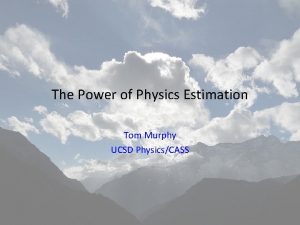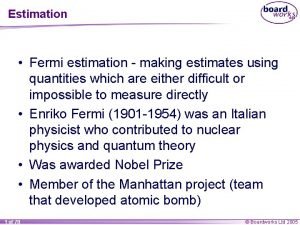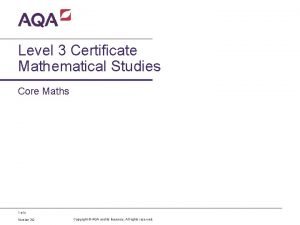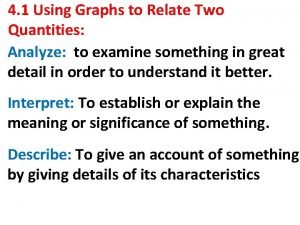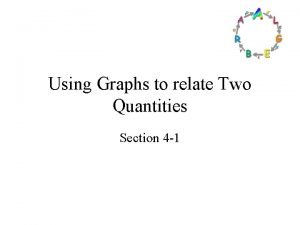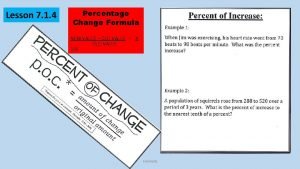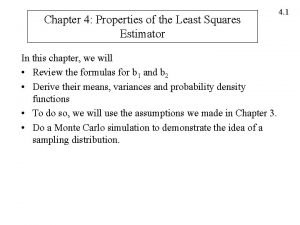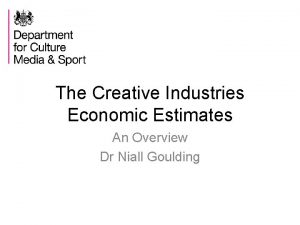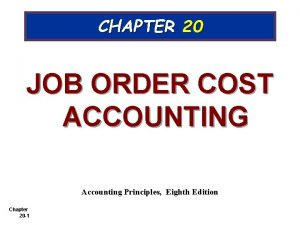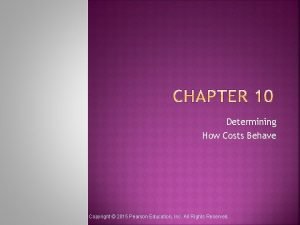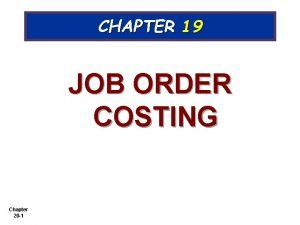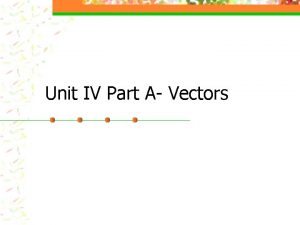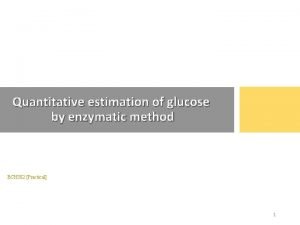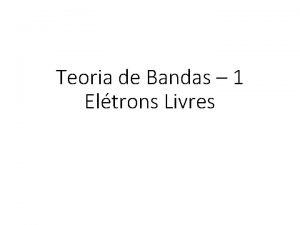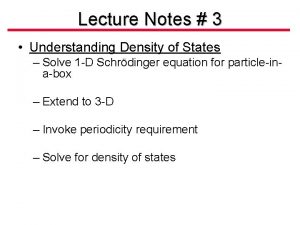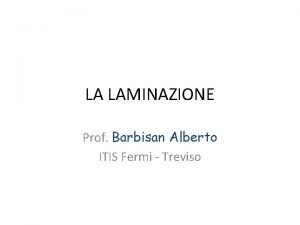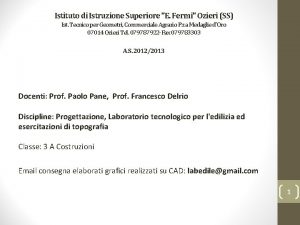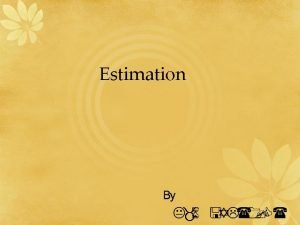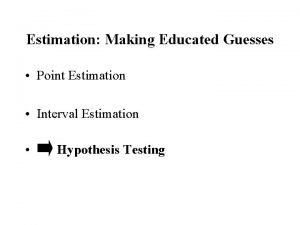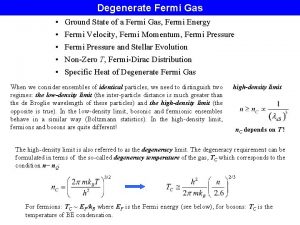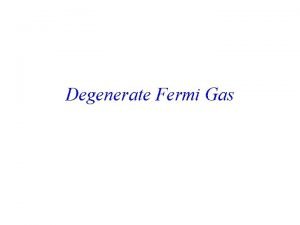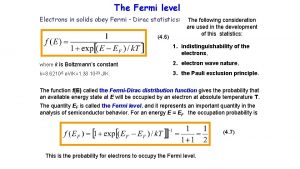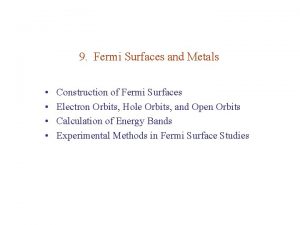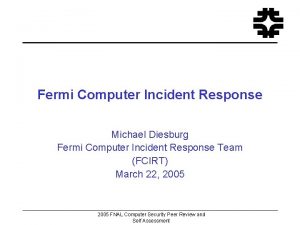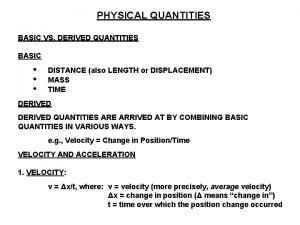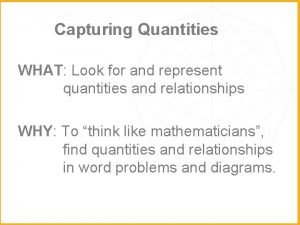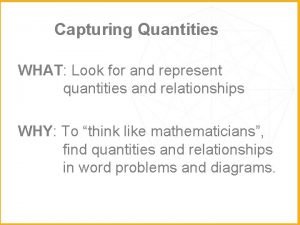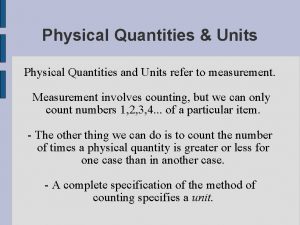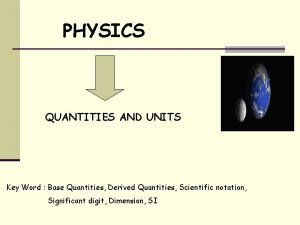Estimation Fermi estimation making estimates using quantities which


































- Slides: 34

Estimation • Fermi estimation - making estimates using quantities which are either difficult or impossible to measure directly • Enriko Fermi (1901 -1954) was an Italian physicist who contributed to nuclear physics and quantum theory • Was awarded Nobel Prize • Member of the Manhattan project (team that developed atomic bomb) 1 of 70 © Boardworks Ltd 2005

What is a Fermi Question? • a Fermi question requires estimation of physical quantities to arrive at the answer • In Fermi question, the goal is to get an answer to an order of magnitude (usually a power of ten) by making reasonable assumptions about the situation • A Fermi question is posed with limited information given • Solving Fermi problems requires analytical skills, confidence with numbers and to think about the assumptions we make when solving problems • 2 of 70 © Boardworks Ltd 2005

A ‘typical’ Fermi question • How many piano tuners are there in New York city? • How many water balloons would it take to fill your gym? • A Fermi question requires to ask many more questions-how big is the water balloon? What are approximate dimensions of the gym? • A Fermi question emphasises process rather than the answer 3 of 70 © Boardworks Ltd 2005

Powers of ten Our decimal number system is based on powers of ten. We can write powers of ten using index notation. 10 = 101 100 = 10 × 10 = 102 1000 = 10 × 10 = 103 10 000 = 10 × 10 = 104 100 000 = 10 × 10 = 105 1 000 = 10 × 10 × 10 = 106 … 4 of 70 © Boardworks Ltd 2005

Negative powers of ten Any number raised to the power of 0 is 1, so 100 = 1 Decimals can be written using negative powers of ten 0. 1 = 1 101 = 1 0. 01 = 100 = 1 102 1 0. 001 = 1000 = 0. 0001 = 1 10000 0. 00001 = = 10 -2 1 103 = 1 100000 0. 000001 = 5 of 70 =10 -1 = 10 -3 1 104 = 1 1000000 = 10 -4 1 105 = = 10 -5 1 106 = 10 -6 … © Boardworks Ltd 2005

Very large numbers Use you calculator to work out the answer to 40 000 × 50 000. Your calculator may display the answer as: 2 × 1015 , 2 E 15 or 2 15 What does the 15 mean? The 15 means that the answer is 2 followed by 15 zeros or: 2 × 1015 6 of 70 = 2 000 000 000 © Boardworks Ltd 2005

Very small numbers Use you calculator to work out the answer to 0. 0002 ÷ 30 000. Your calculator may display the answer as: 1. 5 × 10– 12 , 1. 5 E – 12 or 1. 5 – 12 What does the – 12 mean? The – 12 means that the 15 is divided by 1 followed by 12 zeros. 1. 5 × 10 -12 = 0. 0000002 7 of 70 © Boardworks Ltd 2005

Standard form 2 × 1015 and 1. 5 × 10 -12 are examples of a number written in standard form. Numbers written in standard form have two parts: A number between 1 and 10 × A power of 10 This way of writing a number is also called standard index form or scientific notation. Any number can be written using standard form, however it is usually used to write very large or very small numbers. 8 of 70 © Boardworks Ltd 2005

Standard form – writing large numbers For example, the mass of the planet earth is about 5 970 000 000 kg. We can write this in standard form as a number between 1 and 10 multiplied by a power of 10. 5. 97 × 1024 kg A number between 1 and 10 9 of 70 A power of ten © Boardworks Ltd 2005

Standard form – writing large numbers How can we write these numbers in standard form? 80 000 = 8 × 107 230 000 = 2. 3 × 108 7. 24 × 105 724 000 = 6 003 000 = 371. 45 = 10 of 70 6. 003 × 109 3. 7145 × 102 © Boardworks Ltd 2005

Standard form – writing large numbers These numbers are written in standard form. How can they be written as ordinary numbers? 5 × 1010 = 50 000 000 7. 1 × 106 = 7 100 000 4. 208 × 1011 = 420 800 000 2. 168 × 107 = 21 680 000 6. 7645 × 103 = 11 of 70 6764. 5 © Boardworks Ltd 2005

Standard form – writing small numbers We can write very small numbers using negative powers of ten. For example, the width of this shelled amoeba is 0. 00013 m. We write this in standard form as: 1. 3 × 10 -4 m. A number between 1 and 10 12 of 70 A negative power of 10 © Boardworks Ltd 2005

Standard form – writing small numbers How can we write these numbers in standard form? 0. 0006 = 0. 00000072 = 0. 0000502 = 0. 0000000329 = 0. 001008 = 13 of 70 6 × 10 -4 7. 2 × 10 -7 5. 02 × 10 -5 3. 29 × 10 -8 1. 008 × 10 -3 © Boardworks Ltd 2005

Standard form – writing small numbers These numbers are written in standard form. How can they be written as ordinary numbers? 8 × 10 -4 = 0. 0008 2. 6 × 10 -6 = 0. 0000026 9. 108 × 10 -8 = 0. 00000009108 7. 329 × 10 -5 = 0. 00007329 8. 4542 × 10 -2 = 14 of 70 0. 084542 © Boardworks Ltd 2005

Which number is incorrect? 15 of 70 © Boardworks Ltd 2005

Ordering numbers in standard form Write these numbers in order from smallest to largest: 5. 3 × 10 -4, 6. 8 × 10 -5, 4. 7 × 10 -3, 1. 5 × 10 -4. To order numbers that are written in standard form start by comparing the powers of 10. Remember, 10 -5 is smaller than 10 -4. That means that 6. 8 × 105 is the smallest number in the list. When two or more numbers have the same power of ten we can compare the number parts. 5. 3 × 10 -4 is larger than 1. 5 × 10 -4 so the correct order is: 6. 8 × 10 -5, 16 of 70 1. 5 × 10 -4, 5. 3 × 10 -4, 4. 7 × 10 -3 © Boardworks Ltd 2005

Ordering planet sizes 17 of 70 © Boardworks Ltd 2005

Calculations involving standard form What is 2 × 105 multiplied by 7. 2 × 103 ? To multiply these numbers together we can multiply the number parts together and then the powers of ten together. 2 × 105 × 7. 2 × 103 = (2 × 7. 2) × (105 × 103) = 14. 4 × 108 This answer is not in standard form and must be converted! 14. 4 × 108 = 1. 44 × 109 18 of 70 © Boardworks Ltd 2005

Calculations involving standard form What is 1. 2 × 10 -6 divided by 4. 8 × 107 ? To divide these numbers we can divide the number parts and then divide the powers of ten. (1. 2 × 10 -6) ÷ (4. 8 × 107) = (1. 2 ÷ 4. 8) × (10 -6 ÷ 107) = 0. 25 × 10 -13 This answer is not in standard form and must be converted. 0. 25 × 10 -13 = 2. 5 × 10 -14 19 of 70 © Boardworks Ltd 2005

Travelling to Mars How long would it take a space ship travelling at an average speed of 2. 6 × 103 km/h to reach Mars 8. 32 × 107 km away? 20 of 70 © Boardworks Ltd 2005

Calculations involving standard form How long would it take a space ship travelling at an average speed of 2. 6 × 103 km/h to reach Mars 8. 32 × 107 km away? Rearrange speed = distance time to give time = distance speed 8. 32 × 107 Time to reach Mars = 2. 6 × 103 = 3. 2 × 104 hours This is 8. 32 ÷ 2. 6 21 of 70 This is 107 ÷ 103 © Boardworks Ltd 2005

Calculations involving standard form Use your calculator to work out how long 3. 2 × 104 hours is in years. You can enter 3. 2 × 104 into your calculator using the EXP key: 3 . 2 EXP 4 Divide by 24 to give the equivalent number of days. Divide by 365 to give the equivalent number of years. 3. 2 × 104 hours is over 3½ years. 22 of 70 © Boardworks Ltd 2005

‘I would not study maths for all the tea in China’ • Fermi problem-calculate how much tea there is in China • Questions: • How many people live in China? • How much tea does each person drink a day? • How much dried tea leaves is needed? • How much tea supply is in China? 23 of 70 © Boardworks Ltd 2005

Estimations: • Fermi problem-calculate how much tea there is in China • Questions: • How many people live in China? • A billion people in China • Each drinks 0. 5 l of tea per day • Each 0. 5 l of tea is made of 10 g of dried tea leaves • There are 3 months supply of tea in China 24 of 70 © Boardworks Ltd 2005

A possible solution to tea problem. • • Estimations: There a billion (10⁹ people in China) Each drinks 0. 5 litres of tea a day To make 0. 5 l of tea 10 g (10 ²kg) of dried tea leaves is used • There could be 3 months (90 days supply of tea in China). I can use 100 days. 25 of 70 © Boardworks Ltd 2005

Calculation • Amount of tea= • (10⁹ people) x (10 ²kg/person/day) x (100 days)= 10⁹ tea • A billion kg of tea in China 26 of 70 © Boardworks Ltd 2005

How many jelly beans fill a one litre bottle? • 1 litre = 1000 cubic centimetres • 1 l= 1000 cm³ • What is the approximate size and shape of a jelly bean? • A jelly bean is the shape of a cylinder which is about 2 cm long and 1. 5 cm in diameter • Do jelly beans completely fill the bottle? (does a jelly bean have a regular shape? ) • Due to the irregular shape of the jelly bean it will not be tightly packed. Roughly 80% of the volume of the jar will be filled. 27 of 70 © Boardworks Ltd 2005

calculation • Number of jelly beans = (occupied Volume of the jar) / (Volume of one jelly bean) • Jelly bean- approximately a cylinder 2 cm long and 1. 5 cm in diameter • Volume of one jelly bean= • V=¶ x r² x h • V= ¶ x (d/2)² x 2 • V=¶ x (1. 5 / 2)² x 2 • V=9/8¶ • V= 3. 5 cm³ 28 of 70 © Boardworks Ltd 2005

calculation • The estimated number of jelly beans in 1 litre jar is: • Number of beans=occupied Volume of jar/Volume of 1 bean • Number of beans=(0. 80 x 1000 cm³) / (3. 5 cm³) • = about 230 jelly beans 29 of 70 © Boardworks Ltd 2005

How many piano tuners are in New York? • • 30 of 70 Questions I need to ask: How many people live in New York? Does every person own a piano? Who owns a piano? How many families live in new York? Does every family own a piano? How many times does a piano get tuned? How many piano tuning can 1 tuner do a day? © Boardworks Ltd 2005

Estimations • • • • 31 of 70 How many people live in New York? 8, 000 (8 x 10 c) Does every person own a piano? NO Who owns a piano? Families How many families live in new c) Does every family own a piano? NO Approximately one in every five does How many times does a piano get tuned? Maybe once a year How many piano tuning can 1 tuner do a day? Maybe 4 a day how many days does a piano tuner work? Maybe 200 days a year © Boardworks Ltd 2005

calculation • • • 32 of 70 Number of pianos = 2 x 10ᶝ / 5 = 400, 000 How many tunings a year=400, 000 (on average a piano gets tuned once a year) NYC needs about= 400, 000/(200 days)x (4 pianos/day/piano tuner) NYC needs about=500 piano tuners OR Number of piano tunings per one tuner a year=200 x 4 = 800 piano tuning per one tuner Number of tuners= 400, 000 / 800 500 piano tuners © Boardworks Ltd 2005

Fermi’s problem • Intent is to do an order of magnitude estimate which will give at most the accuracy of one significant figure • Fermi problems typically involve making justified guesses about quantities and their variance or lower and upper bounds. • As long as the initial assumptions in the estimate are reasonable quantities, the result obtained will give an answer within the same scale as the correct result, • Fermi estimates generally work because the estimations of the individual terms are often close to correct, and overestimates and underestimates help cancel each other out. That is, if there is no consistent bias, a Fermi calculation that involves the multiplication of several estimated factors (such as the number of piano tuners in Chicago) will probably be more accurate than might be first supposed. 33 of 70 © Boardworks Ltd 2005

How many piano tuners are in London? 34 of 70 © Boardworks Ltd 2005
 Tom murphy ucsd
Tom murphy ucsd Fermi problems
Fermi problems Angular acceleration vs linear acceleration
Angular acceleration vs linear acceleration Fermi problem piano tuner
Fermi problem piano tuner Fermi estimation core maths
Fermi estimation core maths 4-1 using graphs to relate two quantities
4-1 using graphs to relate two quantities Two quantities
Two quantities Who global estimates on prevalence of hearing loss 2020
Who global estimates on prevalence of hearing loss 2020 Who global estimates on prevalence of hearing loss 2020
Who global estimates on prevalence of hearing loss 2020 Eva estimates that 475 songs
Eva estimates that 475 songs State the properties of least square estimators.
State the properties of least square estimators. Creative industries economic estimates
Creative industries economic estimates Building maintenance cost estimates
Building maintenance cost estimates Job order costing
Job order costing The account analysis method estimates cost functions
The account analysis method estimates cost functions Marquis company estimates that annual manufacturing
Marquis company estimates that annual manufacturing Which of these quantities represents the largest mass?
Which of these quantities represents the largest mass? Which of the following is a pair of vector quantities
Which of the following is a pair of vector quantities Sahli's method procedure
Sahli's method procedure Is making inference simply making a guess
Is making inference simply making a guess War making and state making as organized crime summary
War making and state making as organized crime summary Mamdm
Mamdm Using recursion in models and decision making sheet 3
Using recursion in models and decision making sheet 3 Cryptovariable
Cryptovariable Making spatial decisions using gis
Making spatial decisions using gis Decision making using excel
Decision making using excel Quantitative estimation of glucose
Quantitative estimation of glucose Teoria de bandas
Teoria de bandas Energia de fermi
Energia de fermi Atsufumi hirohata
Atsufumi hirohata Fermi temperature formula
Fermi temperature formula Intrinsic carrier concentration
Intrinsic carrier concentration Fgenera
Fgenera Istituto tecnico ozieri
Istituto tecnico ozieri Fermi bubbles
Fermi bubbles
